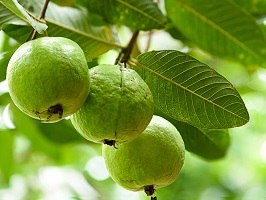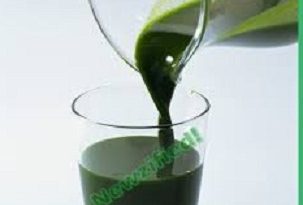Lemon Zest: How to Zest a Lemon
Lemon Zest: How to Zest a Lemon

Zest of a lemon adds a burst of flavor to just about any dish (the possibilities are truly endless), and grated lemon peel has a slew of nutritional advantages that are worth noting.
When you pick up a lemon to squeeze for juice, make sure to zest it first, then freeze the zest for later. You’ll always have these vibrant, flavorful flecks of immune-boosting nutritional gold to use in your recipes.
What is Lemon Zest?
Citrus zest is the flavedo, which is the outermost layer of the peel.
This flavedo (outer layer) contains D limonene, a compound that gives lemon peel its fragrant aroma as well as a variety of nutritional benefits.
A citrus fruit’s peel has two (2) layers on top:
The zest (the outermost part of the rind). The yellow part of the peel (skin) on the outside of a lemon is called zest.
The zest is lustrous, brightly colored, and textured, and it is the only part of the fruit that consumers can see.
The pith (the inner white, fibrous membrane directly below the zest which helps to protect the fruit inside).
The soft spongy white inner layer (“pith”) between the peel (zest) and the fruit has a neutral or mild bitter flavor, but it’s also high in nutrients.
Tip: If you’re not going to juice a lemon you just zested, wrap it in plastic wrap and keep it in the fridge until you’re ready to use it.
The most crucial part of zesting a lemon is this! When grating the peel, make sure you only grate the yellow part, not the white pith! The pith is bitter and should not be consumed.
How to Zest Lemon – Lemon Zesting Instructions
Learn five different methods for zesting a lemon using kitchen tools and utensils you already have.
It’s so simple to get that fresh lemon zest for added flavor to your favorite recipes, whether you use a microplane or citrus zester, or grate it with a cheese grater!
Microplane
When I need finely grated lemon zest, this is by far my favorite method.
A microplane is a kitchen tool for removing the brightly colored flesh from citrus fruits.
Using a Microplane to zest:
- With one hand, hold the lemon and the other, the microplane.
- Rotate the lemon as you move it back and forth over the microplane’s grates. Pay close attention to how your fingers are placed. (The sharp edges of a microplane can easily cut you!)
- Remove the yellow peel from the lemon and continue zesting.
Citrus Zester
A citrus zester is the next method for zesting lemons.
When compared to the smaller pieces produced by a microplane, this tool produces longer strands of peel.
How to Zest with a Citrus Zester:
- Place the fine, sharp-edged holes on one end of the citrus, following the curvature of the fruit, to zest it.
- Gently press into the fruit and pull down to the opposite end.
- Continue until the lemon peel is completely removed and only the pith remains.
Cheese Grater
Most home cooks already have a boxed cheese grater in their cabinet.
Make sure it has the small holes for grating cheese rather than the larger holes for shredding cheese.
Using a Cheese Grater to Zest:
- Use the side of the cheese grater with the smallest holes to grate the lemon.
- Move it back and forth, paying close attention to your finger placement.
- Continue zesting the lemon until it is completely yellow.
Peeler for vegetables
If you don’t have a zester or microplane, another quick way to zest a lemon is to use a vegetable or potato peeler.
While this method is more technique-dependent, you can still get a decent amount of lemon zest if you’re in a hurry.
Using a Vegetable Peeler to Zest:
- Place the peel’s sharp edges on one end of the citrus and gently press them into the fruit.
- Pull down to the other end, being careful not to cut too deeply into the fruit. You don’t want to take away as much of the white as possible.
- Continue until the peel is completely removed and only the pith remains.
- To make lemon zest, finely chop the lemon peel.
Knife
Using a knife, like using a vegetable peeler, is more technique-dependent.
The best part, though? Everyone carries a knife!
When peeling citrus, a paring knife works best.
If you don’t have any other knives, you can always use a very sharp chef’s knife.
Using a Knife to Zest:
- Remove one of the lemon’s ends. Place the cut-end of the lemon on the cutting board.
- Alternatively, you can skip this step and simply rest the lemon on a cutting board.
- Cut into the fruit at an angle, carefully removing the bright yellow peel while avoiding the white pith.
- Remove any remaining white pith.
- Optional: If you want smaller pieces of peel, finely chop until you reach your desired size.
1 Lemon has how much zest?
Here’s a helpful hint for cooking with lemons. 1 lemon contains how much juice and zest? We’ve discovered the secret formula. Keep in mind that if you have very large or very small lemons, the quantity will vary slightly.
Here’s how it works: 1 tablespoon zest and 2 to 3 tablespoons juice from a regular lemon
Is It Possible to Freeze Lemon Zest?
Citrus zest can be stored in the refrigerator for up to a week in a sealed plastic bag, or in the freezer for up to six months in a tightly sealed freezer bag.
- Use a Silpat, parchment paper, or waxed paper to line a cookie sheet.
- Write the date and contents of the freezer bag on the bag.
- Zest as much lemon zest as you want.
- In the zest, squeeze a few drops of lemon juice. When the zest is frozen, this helps it stick together better.
- Measure the lemon zest with a teaspoon and drop by teaspoonfuls onto a Silpat, parchment, or waxed paper. (When I toss the zest in recipes, I like to measure it out by the teaspoonful so it’s already measured out for me.)
- Freeze for 30-45 minutes, or until solidly frozen and not flaking apart when touched.
- Place the frozen lemon zest discs in a freezer bag to keep them fresh.
How to Make Use of Lemon Zest
Lemon zest is a fantastic addition to many recipes because it adds a bright pop of flavor while also providing nutritional benefits.
- Add to vinaigrettes.
- Mix into salads
- Stir into soups
- Toss with garlic and olive oil for roasted vegetables
- Add to smoothies (I do this all the time)
- Simmer with fresh ginger in water for tea
- Add to hot cereal (like oatmeal) or stir into sauces
- Add to marinades
- Sprinkle over seafood dishes
- You can bake with it (like for blueberry muffins, etc).
- Blend it with herb butter (for garlic bread, flour tortillas, and corn on the cob)
- Combine it with fresh dill and yogurt for a lemon dill sauce
Benefits of Lemon Peel
Here are a few lemon peel advantages to consider.
Immune Enhancement
Lemon peel is high in vitamin C and phytochemicals, which may stimulate the immune system.
Antioxidants are abundant
D-limonene and vitamin C are antioxidants that have been linked to a lower risk of diseases like cardiovascular disease and diabetes.
According to some studies, d-limonene helps to reduce oxidative stress by boosting certain enzymes (which is associated with accelerated aging).
Antibacterial.
Antibacterial substances are present, which may inhibit microorganism growth.
Lemon peel contains four compounds that have powerful antibacterial properties and may be effective against Streptococcus mutans and other bacteria that cause oral disease.
Supports heart health.
According to some studies, the fiber, vitamin C, and flavonoids in lemon peel may help to lower the risk of cardiovascular disease.
Lemon peel contains pectin and d limonene, which may help lower triglycerides and LDL cholesterol (bad cholesterol) while increasing HDL cholesterol (good cholesterol).
Nutritional Information
Serving: 1serving | Calories: 31kcal | Carbohydrates: 10g | Protein: 1g | Fat: 1g | Saturated Fat: 1g | Sodium: 2mg | Potassium: 149mg | Fiber: 3g | Sugar: 3g | Vitamin A: 24IU | Vitamin C: 57mg | Calcium: 28mg | Iron: 1mgThe accuracy of nutritional information cannot be guaranteed.
Lemon peel nutritional value
Calcium is found in lemon peels.
Lemon peels contain a small amount of calcium, which is important for strong bones and cellular communication, as Brooking pointed out.
Simply put, your body will not function properly if you don’t get enough calcium, so it’s critical to get enough. (For women under the age of 50, that’s 1,000 milligrams per day.)
They are beneficial to your immune system.
Lemon peels, like other citrus fruits, contain vitamin C, which can help your immune system stay healthy.
If you’re feeling under the weather, incorporating lemon peel into your meals or even your tea can help give your body the boost it needs to get through.
Potassium is found in lemon peels.
Lemon peels also contain a small amount of potassium, which, like calcium, is required for proper cell communication.
It’s especially important to get enough if you sweat a lot (yes, you, in your post-hot-yoga sweat-soaked workout clothes). Otherwise, your body will simply stop working.
They are beneficial to the digestive system.
Tom Brooking’s point about the fiber in lemon peel, this is critical because fiber is necessary for a healthy digestive system.
Other important fiber benefits include lowering inflammation and maintaining a healthy metabolism.
They may be beneficial to your heart.
“Lemon peels have been shown to help lower blood pressure,” says the author.
According to Brooking, a scientific study found that combining lemon consumption with daily walking reduced blood pressure.
According to the study, “the water extract of lemon peels had a suppressive effect on blood pressure.”
Lemon peels may help to prevent cancer.
According to Brooking, “some studies indicate that limonene and other flavonoids in lemon rind are directly linked to preventing the formation and spread of cancerous tumors, particularly cancers of the mouth, pharynx, larynx, and stomach.”
Their anti-inflammatory properties appear to be quite strong.
Lemon peels: How to Eat Them
As a zest
All of these health advantages sound fantastic, but how should lemon peel be consumed?
The most common method, according to Brooking, is as a zest—and it literally works on anything.
Not only will you reap the nutritional benefits, but everything will taste a little fresher as well. “While most of us don’t eat raw lemon peels, freezing whole, organic lemons is a great way to incorporate the peel into your diet,” Brooking says. “For a zesty flavor, grate the lemon peel sprinkles over yogurt or oatmeal, in drinks, and on soups.”
Infuse olive oil with lemon peel.
To get all of the nutritional benefits listed here as well as a good serving of healthy fats, make your own lemon peel olive oil to drizzle on your salad, zucchini noodles, or fish. What a brilliant pantry staple!
Incorporate it into the butter.
This is an especially good tip if you follow the ketogenic diet and butter is a staple in your kitchen. Lemon peel is zested right into the butter, making it ready to spread on all your favorite foods. It goes well with both savory and sweet dishes.
Other unexpected lemon peel uses
- Make a non-toxic all-purpose cleaning solution with them. Lemons, peels and all, are a natural cleaning powerhouse! Infuse lemon peels in a jar of vinegar to make your own solution. You’ll also get that “just cleaned” odor.
- Incorporate it into a home-made beauty treatment. Lemon peels may help to treat acne because of their citric acid content.
Make your own beauty water by grating lemon peels into one bowl, squeezing lemon juice into another, and mixing the peels and juice together. Then, for an all-natural acne treatment, gently massage the solution into your face.
- Make insect repellent with them. Isn’t this the best-smelling bug spray ever? Instead of using something with strange chemicals, rub lemon peel on your skin to keep insects at bay.
- Hide them somewhere stinky. Lemon peels can help eliminate odors from the bottom of your trash can, your bathroom, and your refrigerator. Simply place them wherever they need to be refreshed.
Substitute for Lemon Zest
Note that the effectiveness of these options varies depending on the recipe and how the lemon zest is used.
Lemon juice, freshly squeezed (in some cases).
What’s the best lemon zest substitute for a recipe? Lemon juice, freshly squeezed. Of course, if you don’t have lemon zest, there’s a good chance you won’t have lemon juice.
But we couldn’t leave out this simple change! We don’t recommend using bottled lemon juice because it doesn’t compare to the flavor of a fresh lemon.
Remember that the juice is acidic and may have a sour taste. If the liquid would detract from the recipe, avoid using lemon juice:
For example, in whipped cream that must maintain its fluffy and light texture. What is the calculation? 12 teaspoon lemon zest = 1 tablespoon lemon juice
Zest of lime or orange
What’s the next best thing to lemon zest? a similar amount of lime or orange zest Keep in mind that the flavor will change (to lime or orange, naturally!).
You can use the zest of any citrus fruit, but these are the most common and flavor-wise the most similar.
This substitution is particularly useful in baking and other recipes where texture is important. It can also be used in savory dishes, but keep in mind the following:
Be aware: Lime is associated with Asian and Latin flavors, whereas lemon is associated with Mediterranean flavors.
The lemon zest in an arugula Parmesan salad or lime zest in a cilantro lime dressing makes no sense.
As a result, think about the flavors in your dishes to see what makes sense.
Lemon peel, dried
Another good lemon zest substitute? Lemon peel, dried It’s exactly what it sounds like: a lemon peel that has been removed and dried.
This is a fairly uncommon ingredient: in our 10+ years of recipe development, we’ve never had it in our pantry. But in case you do… What is the calculation? 1 teaspoon lemon zest = 12 teaspoons dried lemon peel
Remove it from the equation.
Lemon zest is an important ingredient in recipes that adds brightness and lift.
It’s a common ingredient in our recipes, and it adds a glimmer that makes people wonder, “Wow, what’s in this?”
But you don’t have any of the above-mentioned substitution ingredients? Lemon zest is optional.
This small but powerfully flavorful peel won’t ruin your recipe (unless you’re making Lemon Poppyseed Pancakes, of course).
Frequently Asked Questions on Lemon Zest
What is the shelf life of lemon zest?
For the best results, use your zest right away.
How do you keep citrus zest fresh?
Any leftover zest can be frozen for up to 6 months in an airtight container or bag. We also enjoy making lemon ice by combining extra zest with water in ice cube trays.
How much zest does one lemon contain?
1 tablespoon of lemon zest comes from a medium lemon. It does, however, depend on the size of the lemon.
How much zest does one lime contain?
It depends on the size of your limes, which vary greatly depending on where you live and the season. A lime can yield anywhere from 1 teaspoon to 1 tablespoon of lime zest.
Is it possible to juice a lemon after it has been zested?
Yes, it’s much easier to zest first and juice later. Don’t throw away your zested lemons; slice and juice them, then freeze the juice.
Lemon Zest: How to Use It
You can use zest in a variety of recipes, whether or not they call for lemons or limes.
Here are a few of my favorite applications:
- Make Lemon Curd or Lime Curd
- Lemon Bars or Margarita Bars
- Sprinkle some over roasted green beans
- Add some zest to the blueberry cinnamon roll casserole
- Whipped Cream with Zest
What is the simplest method for zesting lemons?
Wash your fruit first. Next, place your Microplane or grater on a plate or cutting board. Then, using the lemon, scrape the yellow skin away from the surface.
Finally, make sure to clean out the zest on the back side of the Microplane.
How does lemon zest look?
The yellow part of the peel (skin) on the outside of the lemon is called zest.
The zest is lustrous, brightly colored, and textured, and it is the only part of the fruit that consumers can see.
The pith (the inner white, fibrous membrane directly below the zest which helps to protect the fruit inside).


